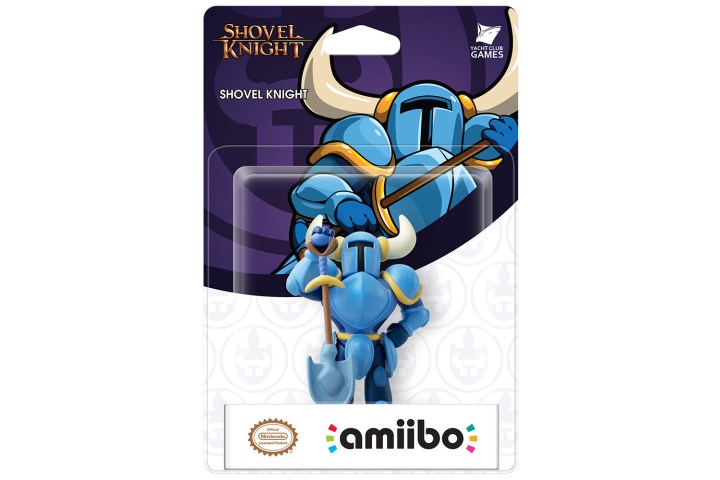
Nintendo announced today that the titular main character of Shovel Knight will soon be available as an Amiibo. This makes Shovel Knight the first ever indie game to receive its own Amiibo, showing just how good a job developer Yacht Club Games has done at creating a successor to the retro games that inspired it.
“It’s been a great honor to work directly with Nintendo, creating a Shovel Knight amiibo that sits beside their most beloved characters,” Yacht Club Games said in a statement. “We are elated to expand the world of Shovel Knight, and to keep developing unique game-play experiences on Nintendo’s platforms.”
For Wii U owners, the Amiibo will offer something not yet seen in Shovel Knight: cooperative play. Both the 3DS and Wii U versions of the game can use the Amiibo to level up Shovel Knight with new visual enhancements and in-game abilities, then use the powered-up character in Amiibo-exclusive challenge levels.
While the retail release of Shovel Knight and upcoming free Plague of Shadows expansion are obviously keeping Yacht Club Games busy, Nintendo hints that a sequel may be on the way as well. “Creating an Amiibo that’s compatible with all current and future Shovel Knight games shows that our strong relationship with independent developers is constantly evolving,” Nintendo of America’s Damon Baker said.
This new Amiibo shows that Nintendo is doing its best to keep Shovel Knight closely associated with the company’s name, despite it being available on other platforms. The Plague of Shadows expansion will launch first on the Nintendo 3DS and Wii U, with other platforms getting it at a later date.
There is no word on when the Amiibo will be release, but it’s expected that it will be somewhat close to Shovel Knight’s retail release on October 13.
Editors' Recommendations
- 10 significant video game anniversaries worth celebrating in 2024
- Play these 3DS and Wii U games before Nintendo shutters their online features
- It’s the last day of Nintendo’s April Indie Sale — don’t miss these 7 great games
- Grab these Nintendo 3DS games before the eShop closes
- The Nintendo 3DS’ best (and weirdest) cult hit is coming to Apple Arcade

